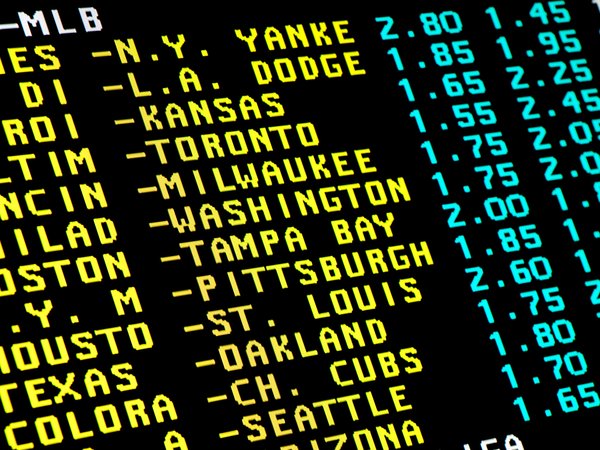Commercial real estate investing has long been seen as a source of dependable returns and dividends, but legendary investor Charlie Munger issued a warning earlier this year that points to dramatic change.
“A lot of real estate isn’t so good any more,” Munger, Warren Buffett’s close friend, told the Financial Times in April 2023. “We have a lot of troubled office buildings, a lot of troubled shopping centers, a lot of troubled other properties. There’s a lot of agony out there.”
Munger’s observations are backed by statistics that suggest softness in commercial real estate investing. Specifically, there were significant declines in the overall volume of commercial real estate investing and commercial property values in the second half of 2022.
Keep reading for the commercial real estate statistics investors need to know in 2023.
Key findings
- The total dollar volume of commercial real estate transactions was $1.14 trillion in 2022, down from $1.43 trillion in 2021.
- Commercial property values are down 15% in the past 12 months, led by a 25% decline in office value and a 21% decline in apartment value.
- For the first time, the share of commercial real estate investment in multifamily homes has overtaken investment in offices.
Commercial real estate dollar volume
Total global commercial real estate dollar volume in 2022 stood at $1.14 trillion, a 20% drop from 2021, spurred by rising interest rates and macroeconomic uncertainty.
Investors pulled back from commercial real estate beginning in the third quarter of 2022. That was after roughly $600 billion poured into commercial real estate investing over the course of 2021, according to CBRE, a commercial real estate investing company.
The return to commercial real estate from 2021 to mid-2022 followed a similarly steep decline in 2020 amid the COVID-19 pandemic.
Commercial real estate investing: Volume by sector
Commercial real estate investing dropped in several sectors in the second half of 2022 compared to the first half.
The largest declines in investment took place in the multifamily commercial real estate sector ($-51 billion in the second half of 2022 compared to the first half), office sector ($-29 billion), and industrial sector (-$28 billion). Commercial real estate investment in retail properties dropped $19 billion in the second half of 2022 compared to the first half, while hotel investment dropped about $2 billion.
The largest single quarter declines in each sector other than retail have all come since 2020, likely due to the significant disruption from COVID-19 that is still playing out.
For example, the future of office space remains in flux, with major cities reporting office vacancy rates of around 10% as employees continue to work from home or have adopted a hybrid approach.
Share of commercial real estate investment by sector
Significant shifts in commercial real estate investing have occurred since the pandemic.
- Multifamily properties overtook offices for the largest share of commercial real estate investment in the second quarter of 2021 as the impact of remote work became apparent. In the fourth quarter of 2022, the share of commercial real estate investment in office space grew for the first time since 2017.
- Industrial real estate drew a growing share of investment starting in 2020 amid the supply chain crisis and geopolitical developments that have encouraged nearshoring and reshoring.
- Retail bottomed out in 2021 but began to rebound in 2022 as shoppers started returning to stores.
Changes in commercial real estate pricing
Commercial real estate property values are down 15% in the past 12 months, according to the Green Street Commercial Property Price Index. The index shows the price of commercial real estate transactions.
In the past 12 months, commercial property values have dropped 14%, according to Green Street. Commercial real estate property values peaked in March and April 2022 after a steep drop in 2020 and a rapid recovery through 2021.
Here’s how commercial property values have changed since 2007:
Commercial real estate pricing by sector
Commercial real estate investing prospects vary by sector.
Property values are down across the board, with malls, office space, and net lease space all below 2007 prices. Unsurprisingly, those sectors have recently seen among the highest reductions in investment volume and have uncertain futures in the aftermath of the pandemic.
Here’s how the prices of each sector have fared from April 2023 to the year prior, according to Green Street’s Commercial Property Price Index:
| Sector | Index Value | Past Month | Past 12 Months | From Recent Peak |
|---|---|---|---|---|
| All Property | 131.3 | -0.10% | -15% | -15% |
| Apartment | 150.7 | 0.00% | -21% | -21% |
| Industrial | 221.2 | 0.00% | -13% | -13% |
| Mall | 79.5 | 0.00% | -15% | -19% |
| Office | 85.2 | 0.00% | -25% | -25% |
| Strip Retail | 112.9 | 0.00% | -14% | -14% |
| Health Care | 132.7 | -0.70% | -11% | -12% |
| Lodging | 108.9 | 0.00% | -1% | -4% |
| Manufactured Home Park | 283.8 | 0.00% | -12% | -12% |
| Net Lease | 97.6 | 0.00% | -16% | -16% |
| Self-Storage | 281.6 | 0.00% | -10% | -10% |
Multifamily commercial real estate investment trends
Multifamily commercial real estate has experienced softness in recent months. A couple of factors may be responsible for the decline in investment and property values.
First, rent growth has slowed to just 2.5% in the past 12 months, according to the National Association of Realtors. Rent is growing fastest in mid-size and smaller cities, although demand for apartments is still strong in big cities such as New York, Austin, Denver, and Washington, D.C.
Second, while the national vacancy rate in Q1 2023 is back to pre-pandemic levels, it’s still up from 5% in the last quarter of 2022.
Investment volume is also dropping, although multifamily real estate still accounts for the largest share of commercial real estate investment.
Multifamily - areas with fastest rent growth
| Area | 2023 Q1 | 2022 Q1 |
|---|---|---|
| Peoria, IL | 9.55% | 9.02% |
| Fayetteville, NC | 8.98% | 12.43% |
| Kingsport, TN | 8.39% | 9.45% |
| Knoxville, TN | 8.08% | 15.1% |
| Fayetteville-Springdale-Rogers, AR | 7.86% | 8.22% |
| Omaha, NE | 7.2% | 7.41% |
| Gulfport-Biloxi-Pascagoula, MS | 7.03% | 10.31% |
| Madison, WI | 6.93% | 5.03% |
| Lincoln, NE | 6.68% | 8.22% |
| Indianapolis, IN | 6.6% | 12.02% |
Office commercial real estate investment trends
Declining investment in office space is occurring alongside a meager rent growth rate of just 0.9% in the past 12 months and a record vacancy rate of 12.9%, according to the National Association of Realtors.
Tech hubs have been hit the hardest by rising vacancy rates, while smaller cities and manufacturing hubs have fared better.
Houston has a whopping office vacancy rate of 19%, and the Dallas-Fort Worth area is not far behind with a vacancy rate of 19%.
The rate of available office space, which measures vacant offices plus leased space that is not being renewed and space that a tenant is trying to sublet, is also at a record high of 16.4%, per CoStar Group.
Some cities are studying if it’s feasible to turn office space into housing as they face the dual crises of lack of affordable housing and floundering downtowns.
Highest office vacancy rates
| Area | 2023 Q1 | 2022 Q1 |
|---|---|---|
| Houston, TX | 19.09% | 18.52% |
| Dallas-Fort Worth, TX | 17.98% | 17.49% |
| San Francisco, CA | 17.24% | 13.58% |
| Chicago, IL | 15.67% | 15.09% |
| Washington, DC | 15.65% | 14.83% |
| Austin, TX | 15.26% | 12.3% |
| Denver, CO | 15.25% | 14.05% |
| Phoenix, AZ | 15.13% | 14.16% |
| Los Angeles, CA | 14.98% | 13.61% |
| Atlanta, GA | 14.03% | 14.11% |
Lowest office vacancy rates
| Area | 2023 Q1 | 2022 Q1 |
|---|---|---|
| Huntington, WV | 1.73% | 1.75% |
| Savannah, GA | 2% | 2.36% |
| Youngstown, OH | 2.15% | 2.55% |
| Myrtle Beach, SC | 2.18% | 2.32% |
| Clarksville, TV | 2.33% | 1.98% |
| Davenport, IA | 2.35% | 3.7% |
| Asheville, NC | 2.38% | 2.88% |
| Olympia, WA | 2.42% | 2.48% |
| Salisbury, MD | 2.7% | 2.07% |
| Visalia, CA | 2.71% | 2.52% |
Industrial commercial real estate investment trends
Industrial commercial real estate has seen the largest rent growth in the past 12 months at 10.3%, led by demand for logistics space and limited available real estate. Alongside strong rent growth, the vacancy rate for industrial properties is 4.3%, among the lowest for commercial real estate.
Dallas-Fort Worth, Chicago, Houston, and Phoenix are experiencing the most rapid absorption, which is a measure of demand.
Retail commercial real estate investment trends
Retail properties boast the lowest vacancy rate of the commercial property sector at 4.2%, although rent growth over the past 12 months is somewhat sluggish at 3.8%, according to the National Association of Realtors.
General retail stores and neighborhood centers, which feature drug stores and supermarkets, were responsible for almost 90% of net absorption in the first quarter of 2023, per the National Association of Realtors.
Malls were the only retail real estate type to have negative net absorption in Q1 of 2023.
Inflation may have put a damper on retail real estate rent growth as consumers feel the pinch of rising prices.
Hotel commercial real estate investment trends
Hotels are a potential bright spot for commercial real estate for two reasons: Occupancy rates are in line with pre-pandemic levels, and sales volumes have exceeded pre-pandemic numbers.
The 12-month occupancy rate for hotels in March 2023 stood at 63.4%, the same rate recorded in March 2020, according to the National Association of Realtors.
12-month occupancy rate for hotels
| 2020 | 2021 | 2022 | 2023 |
|---|---|---|---|
| 63.4% | 42.4% | 59.9% | 63.4% |
At the same time, the average daily rate per room was $152, a 16% increase from March 2020. That resulted in a record 12-month sales volume of $56.2 billion.
12-month sales volume for hotels
| 2020 | 2021 | 2022 | 2023 |
|---|---|---|---|
| $37.8 billion | $10.8 billion | $50.2 billion | $56.2 billion |
How to get into commercial real estate investing
Adding real estate to your portfolio is a great way to diversify your investments, and there are plenty of ways to start investing in real estate.
The easiest way to invest in commercial real estate is through a real estate investment trust (REIT). These companies manage and own commercial real estate and trade on stock exchanges just like stocks. Most pay high dividends. Investors can pick from broad REITs that have exposure to different commercial real estate sectors or more focused REITs that own specific types of real estate.
Real estate funds are an alternative to REITs. These mutual funds or exchange-traded funds (ETFs) invest in REITs but don’t have to pay dividends so they tend to grow quicker.
Investors looking for more hands-on ways to invest in real estate should consider purchasing residential real estate and turning it into a rental property or trying their hand at house flipping. Both come with risks and require significant up-front investment plus long-term management.
Whether you opt for a REIT, a real estate fund, or an investment property, here are some important facets of real estate investing to keep in mind:
- Commercial real estate has multiple sectors, each exposed differently to economic variables and other factors.
- Geography is key. Commercial real estate markets differ by location, each with its own supply and demand and planned construction.
- Do your due diligence, especially if you’re purchasing real estate. Just like with any investment, you will want to review financials and other documents. But with real estate there are unique factors to consider, such as zoning, permitting, construction in the area, and how other similar projects have fared.
Sources
- CBRE (2023). “Global Investment Declines Sharply in Q4 2022.”
- KKR (2023). “Q1 2023 Commercial Real Estate Outlook: Setting the Stage for Opportunities.”
- Federal Reserve (2023). “Assets and Liabilities of Commercial Banks in the United States - H.8.”
- Green Street (2023). “Commercial Property Price Index.”
- National Association of Realtors (2023). “April 2023 Commercial Market Insights Report.”

























































